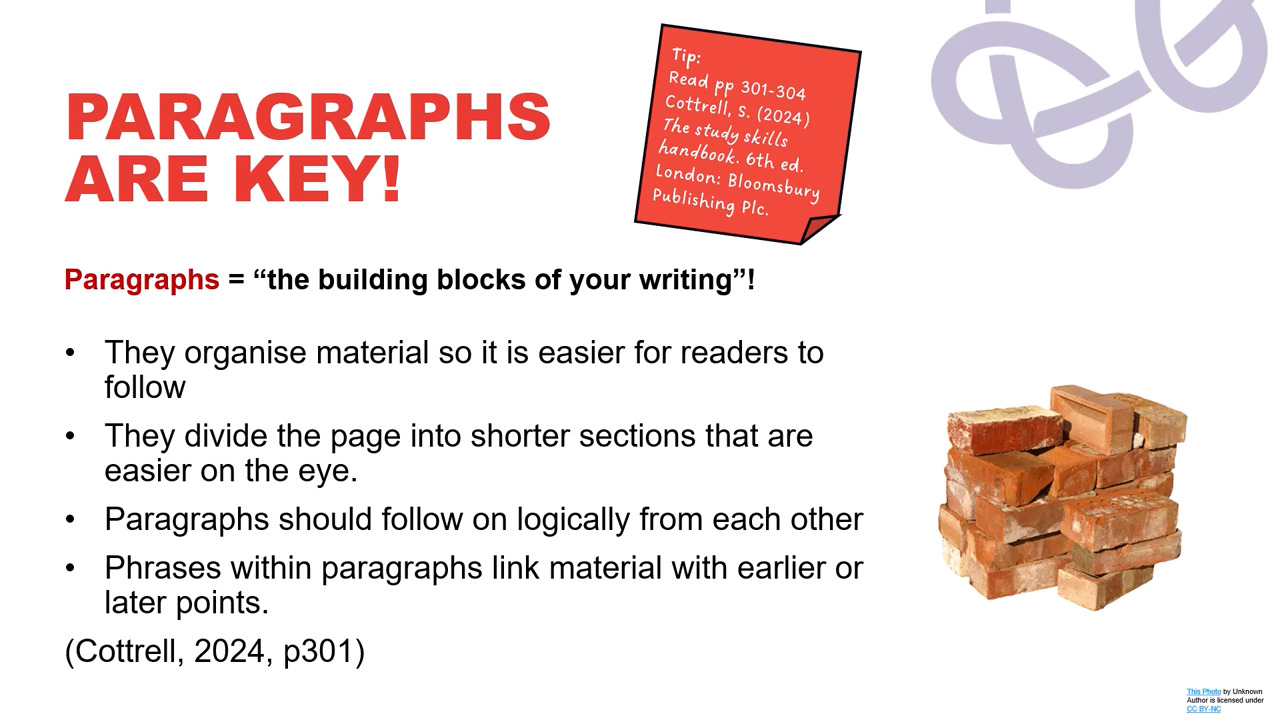Introduction to literary studies seminar for D. Theinová
Section outline
-
INTRODUCTION TO LITERARY STUDIES SEMINAR
SUMMER SEMESTER 2024/2025
Daniela Theinová, PhD
Tuesday 15:50-17:20, Room 111
Wednesday 17:30-19:05, Room 111Consultation hours: in person or online, by email appointment
Email: daniela.theinova@ff.cuni.cz
NB: Scroll below to access reading materials and questions/assignments for each upcoming class.
Link to the Moodle site of prof. Pilný’s Introduction to Literary Studies lecture: https://dl1.cuni.cz/course/view.php?id=12354
OBJECTIVES
The general aim of the seminar is to improve students’ reading and interpreting skills. Students are provided with an opportunity to test out in practice some of the knowledge gained in the lecture and to discuss the critical terms with which they were acquainted. The seminar also includes several sessions focused on the use of some basic terms of poetics in an analysis of specific poems. Formal properties of the academic essay are applied in the students’ final written projects.

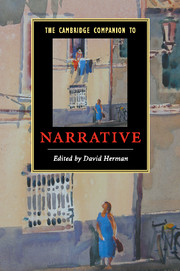
SYLLABUS – SUMMER SEMESTER 2024/25
THE SCHEDULE AND THE SELECTION OF READING MATERIALS IN THE SYLLABUS IS TENTATIVE; please scroll below to find an updated reading list and questions for each week.
Please note that the course starts in the second week of the semester, on 26 February 2026.
Week 1 – 25. & 26. 2. 2025
Introduction: course requirements, assignments, prose and approaches to interpretation
& a discussion on AI in research and academic writingWeek 2 – 4. & 5. 3. 2025
Narrative: Plot, Story and Discourse I
Texts:
Shirley Jackson, “The Lottery”
Clarice Lispector, “The Smallest Woman in the World”Week 4 – 11. & 12. 3. 2025
Narrative: Plot, Story and Discourse II
Texts:
Guy de Maupassant, “The Necklace”
Katherine Mansfield, “A Dill Pickle”Week 5 – 18. & 19. 3. 2025
Narrative: Character
Texts:
Charles Dickens, Great Expectations Chapter 8
James Joyce, “Clay” from DublinersWeek 6 – 25. & 26. 3. 2025
Narrative: Space, Time and Meaning
Texts:
E.M. Forster, A Passage to India, Chapter 1
Kate Atkinson, Life After Life (excerpt)Week 8 – 1. & 2. 4. 2025
Narrators and Narrative Situation I
Texts:
Barbara Kingsolver, The Poisonwood Bible (extracts)
Sinead Morrissey, “My Life According to You”Week 9 – 8. & 9. 4. 2025
Narrators and Narrative Situation II (Focalization)
Texts:
Jane Austen, Pride and Prejudice, Chapter 1
Virginia Woolf, To the Lighthouse, Chapter 1Week 10 – 15. & 16. 4. 2025
Narrators and Narrative Situation III
Texts:
Rivka Galchen, “The Lost Order”
Tessa Hadley, “Surrogate”Week 11 – 22. & 23. 4. 2025
Representation of Consciousness
Texts:
Charlotte Perkins Gilman, “The Yellow Wallpaper”
Ralph Ellison, Invisible Man, PrologueWeek 12 – 29. & 30. 4. 2025
Approaches to Text & Conclusions
Text: Charlotte Perkins Gilman, “The Yellow Wallpaper” + critical essays posted on MoodleWeek 13 – 6. & 14. May 2025 (Classes on 7. and 13. May are CANCELLED)
ReserveNB: ESSAYS must be uploaded on the course site by 11 May 2025. Essays must be typed (as a WORD DOC not a PDF) and uploaded on the course Moodle site. See below for further instructions.
MATERIAL
Recommended Reading:Aristotle. Poetics.
Cuddon, A.J. The Penguin Dictionary of Literary Terms and Literary Theory (London: Penguin, 1992).
Fludernik, M. An Introduction to Narratology (Abingdon: Routledge, 2009).
Green, K. and J. LeBihan. Critical Theory and Practice (London: Routledge, 1996).
Hobsbaum, P. Metre, Rhythm and Verse Form (Abingdon: Routledge, 1996).
Montgomery, M. et al. Ways of Reading (London: Routledge, 1992).
Pavis, P. Dictionary of the Theatre: Terms, Concepts, and Analysis (Toronto: University of Toronto Press, 1998).
Preminger, A. and T.V.F. Brogan. The New Princeton Encyclopedia of Poetry and Poetics (Princeton: Princeton University Press, 1993).
COURSE REQUIREMENTS
ATTENDANCE
Students are expected to attend classes. YOU ARE PERMITTED A MAXIMUM OF TWO ABSENCES.PARTICIPATION
Participation extends beyond mere attendance. Expect your instructor to keep track of how often you contribute, particularly during the class discussions of assigned readings and/or minor written assignments.MID-TERM ESSAY
(see below for Essay Guidelines and for some useful tips on academic writing)
Select ONE of the following texts:
Virginia Woolf, “The New Dress”Mary Lavin, “A Story with a Pattern”
Margaret Atwood, “Giving Birth”
John Barth, “Lost in the Funhouse”
AND address ONE of the following topics in relation to the text you have chosen:
1. Identify narrative structures in the text. Discuss narrative structures in relation to the central elements of the text (e.g., how are narrative structures – as, for instance, narrative voice, point of view – used to develop the central concerns of the text?).
2. What is the role of literary allusions in the text? To what extent are allusions central to the structural semantics of the text?
3. Comment on the relationship between historical context and the formal/thematic features of the text.
4. To what extent can the text be considered ‘political’ and in what sense could the language of the text be seen to function politically?
NB The minimum length for the essay is 1 500 words, the maximum length is 1550 words (THE WORD LIMIT INCLUDES THE MAIN TEXT OF THE ESSAY AND FOOTNOTES; it excludes the bibliography). Essays must include full footnotes and bibliographical references for all works cited or paraphrased (in accordance with the Notes and Bibliography Chicago Style – please consult the UALK Chicago Guidelines). Emphasis will be placed on depth and sophistication of argument, and upon the component of original research. Students are advised not to use Internet sources in place of adequately researching texts available in print or via the Charles University eResources Portal (UKAŽ). Essays must be presented with attention to correct spelling and stylistics.
You should use at leas 4 SECONDARY SOURCES in your essay. These must include at least 2 monographs or collections of essays (published in a book form) on a relevant theme. The recommended number of sources excludes references to dictionaries, dictionaries of literary terms or encyclopedias. You can include these, but only in addition to your other sources.
Plagiarism will not be tolerated and will result in a fail grade. The use of generative AI for this assignment is prohibited.
The DEADLINE for the submission of essays is 11 May 2025 (11:59 p.m.).
Essays must be typed in WORD format (or an equivalent; NO PDFs) and uploaded on the course Moodle site. Contact me by e-mail (prior to the deadline) if you encounter difficulties uploading your paper.
Extensions will only be granted on the basis of a consultation or written request accompanied by a doctor’s certificate. Students are advised that they may, at the lecturer’s discretion, be given the option of re-submission where essays have failed to achieve a satisfactory standard of argumentation. However, any rewrites must be submitted (by email to daniela.theinova@ff.cuni.cz) by 7 September 2025.
FINAL TEST
(Only for single-subject students; see below for details.)ASSESSMENT
Double-subject Students
WS (zápočet): Attendance (max. 2 unexplained absences) and active participation in class, mid-term essay: interpretation of poetry (1 500 words).
SS (zápočet): Attendance (max. 2 unexplained absences) and active participation in class, mid-term essay: narrative analysis (1 500 words).
Criteria of Assessment: All assignments will be awarded a letter grade. Credit (zápočet) for each semester will be given on the basis of receiving a pass grade (i.e., A to C-) for both essay and participation.
Single-subject Students:
WS (zápočet): Attendance (max. 2 unexplained absences) and active participation in class, mid-term essay: interpretation of poetry (1 500 words), final test on poetics and genre definitions.
SS (zápočet, zkouška): Attendance (max. 2 unexplained absences) and active participation in class, mid-term essay: narrative analysis (1 500 words), final test on narrative strategies and approaches to text (literary theories).
Criteria of Assessment: All assignments will be awarded a letter grade. Credit (zápočet) for each semester will be given on the basis of receiving a pass grade (i.e., A to C-) for essay, test and participation each. The final exam grade (after the summer semester) will be calculated from the results in the individual assignments.Composition of Final Exam Grade for Single Subject Students
Participation winter semester
10%
Participation summer semester
10%
Essay winter semester
25%
Essay summer semester
25%
Test winter semester
15%
Test summer semester
15%
Value of Individual Letter Grades Awarded for Assignments
10%
15%
25%
A
10
15
25
A-
9
13.5
22.5
B+
8.7
13
21.75
B
8.5
12.75
21.25
B-
8
12
20
C+
7.7
11.5
19.25
C
7.5
11.25
18.75
C-
7
10.5
17.5
Conversion of Grades to a Final FFUK Exam Grade
FFUK Grade
Letter Grade
Percent (%)
Generally Accepted Meaning
1
A
96-100
Outstanding work
A-
90-95
2
B+
87-89
Good work, distinctly above average
B
83-86
B-
80-82
3
C+
77-79
Acceptable work
C
73-76
C-
70-72
F
F
0-69
Work that does not meet minimum standards for passing the course
Example:
A student’s performance has been graded as follows:
Participation winter semester A- = 9
Participation summer semester B = 8.5
Essay winter semester A- = 22.5
Essay summer semester C = 18.75
Test winter semester C = 11.25
Test summer semester B = 12.75
The final exam grade is 2 (B-) = 82.75% -
We will introduce the syllabus and define some fo the basic terms, including PROSE, NOVEL, SHORT STORY etc. We will talk about the development of literary fiction and the relevant literary forms, and introduce oursleves to the basics of narratology.
No preliminary reading has been assigned for this session.
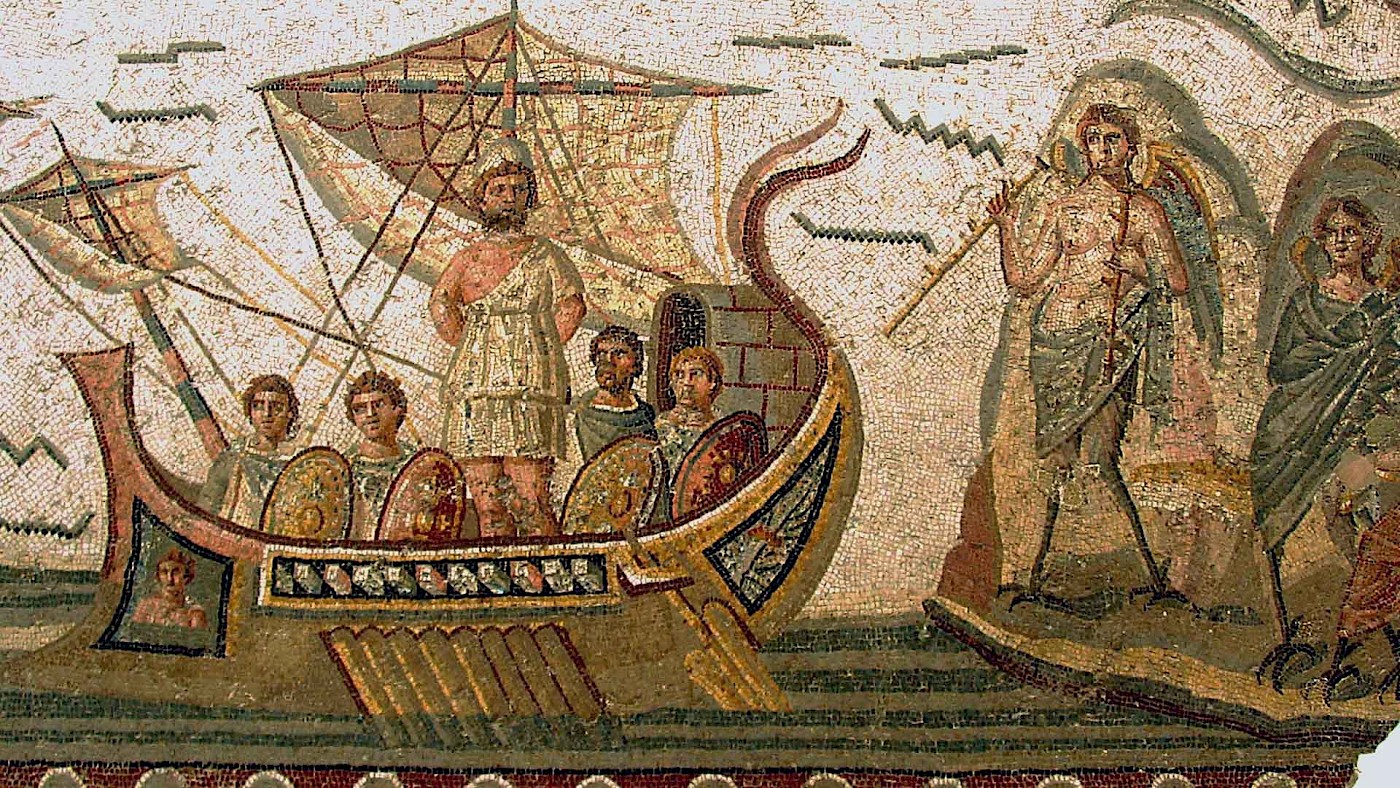
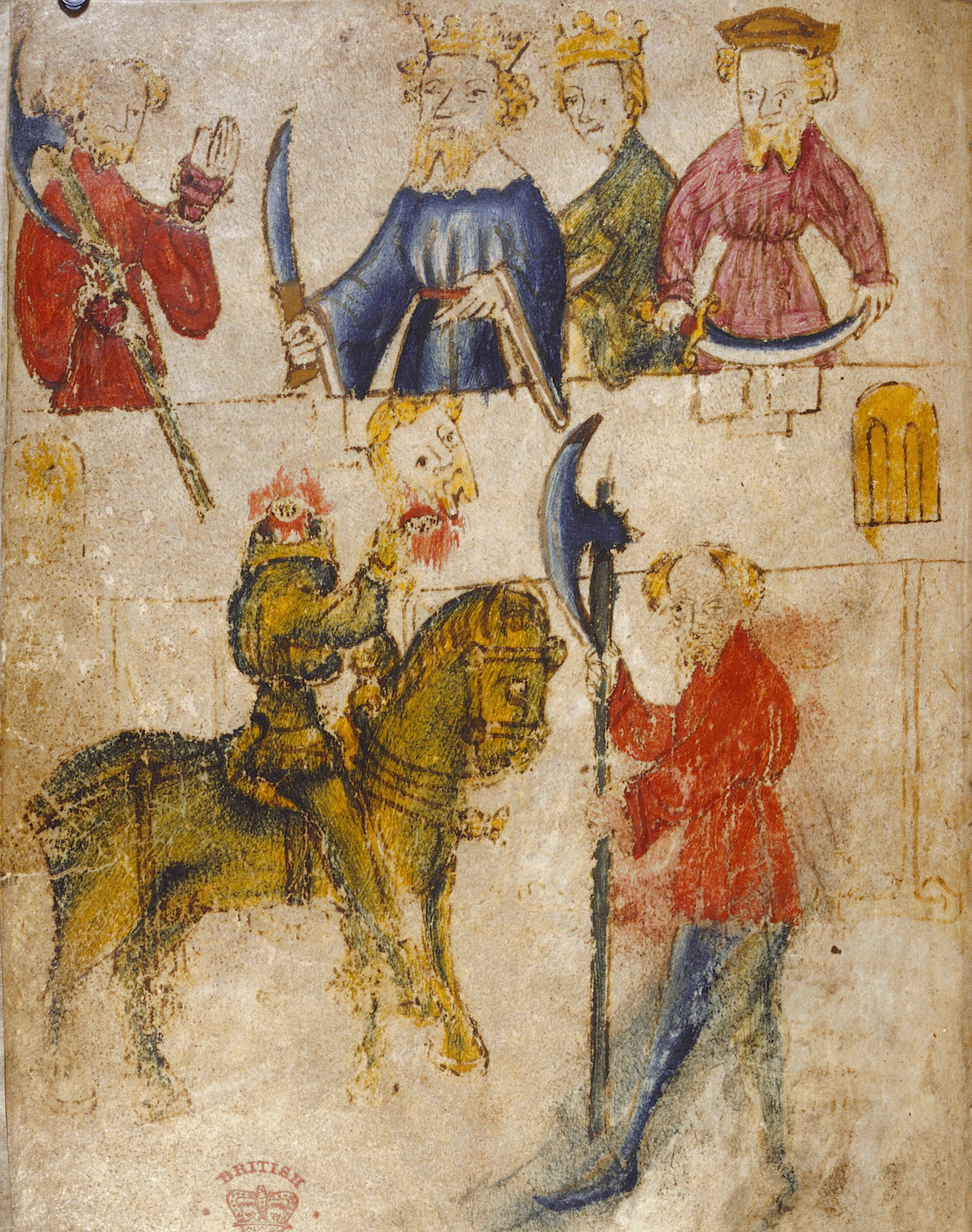
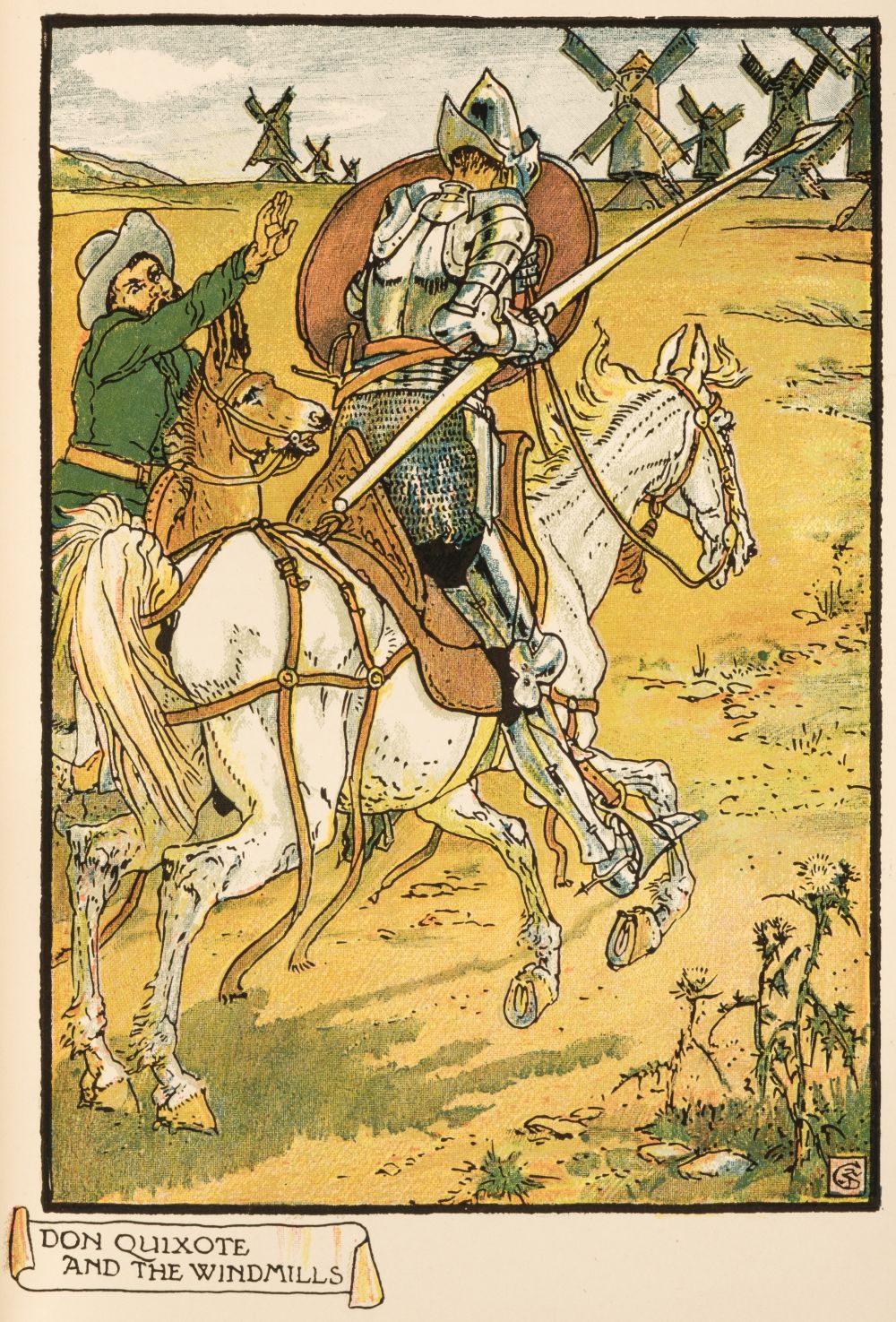
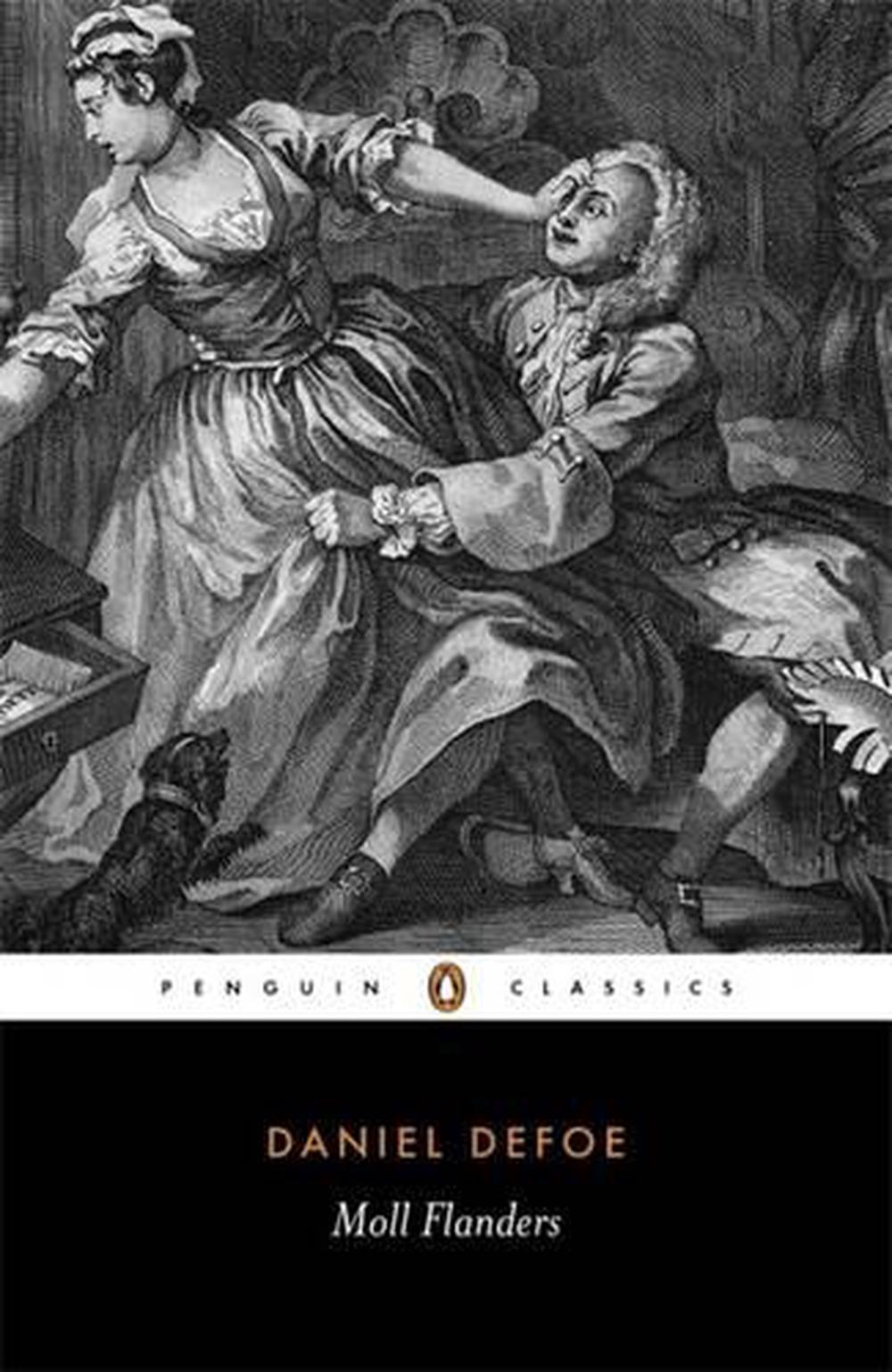
-
Narrative: Plot, Story and Discourse I

Texts:
· Shirley Jackson “The Lottery”
· Clarice Lispector “The Smallest Woman in the World”Assignment:
1. Research and assemble definitions of the following terms:
Story, Plot, Discourse, Fabula, Sjuzhet.
2. Read the short stories and consider how the terms might be used to analyse them (particularly, write down a fabula and sjuzhet for each of the two stories).
3. We will discuss how plot structure is applied in the stories. Are they linear narratives? Do they contain the four basic components of a plot: exposition, complication (conflict), climax and resolution (denouement)?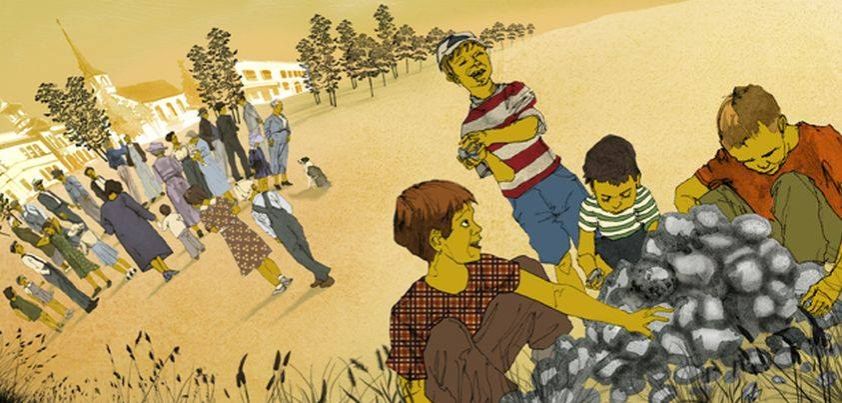
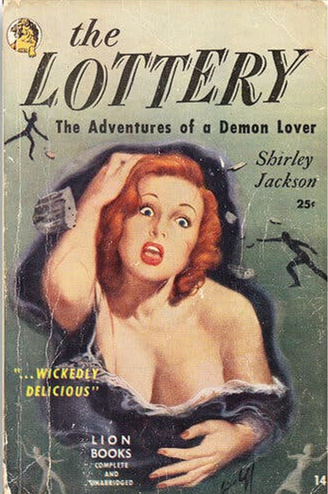

https://www.nytimes.com/2023/06/26/books/review/the-lottery-75th-anniversary-shirley-jackson.html


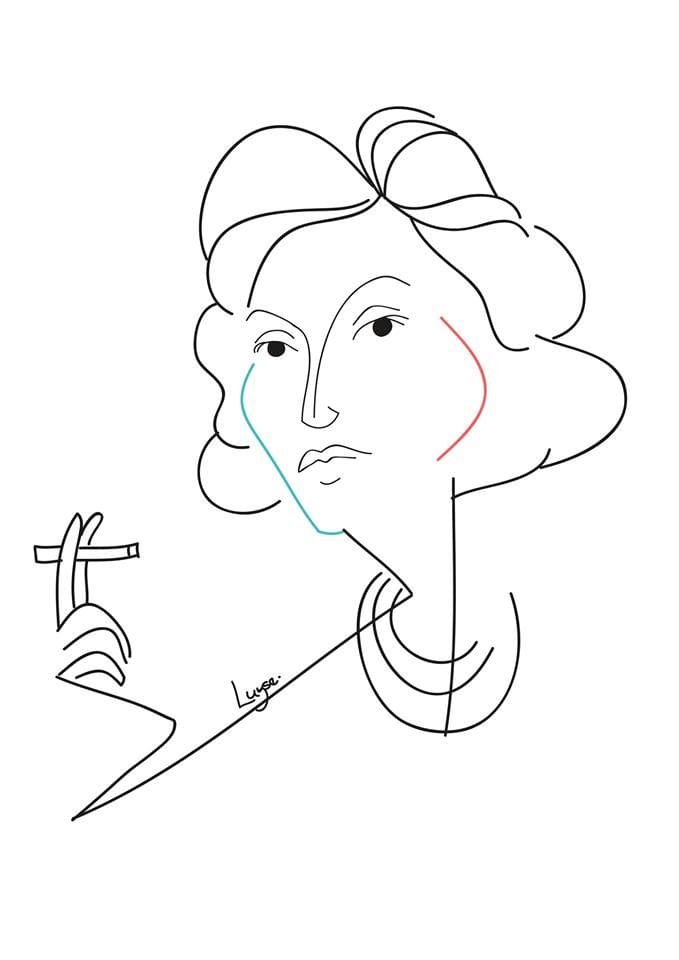

https://www.newyorker.com/books/page-turner/the-true-glamour-of-clarice-lispector
-
Read ‘The Necklace’ by Guy de Maupassant and ‘A Dill Pickle’ by Katherine Mansfield. (Bring the two stories form last week to the class, too.)
Read the chapter by H. Porter Abbott on ‘Story, Plot, and Narration’ in The Cambridge Companion (only the first part, pp. 39-45), make notes.
QUESTIONS
(Refer to Abbott’s arguments, wherever applicable, and study the handouts for Week 2 before answering the questions below – make notes):· What’s the fabula of each of the two new stories and how does it differ from its rendering (sjuzhet; what are the methods of defamiliarisation used in the two narratives)?
· What would the plot summary of each of the stories be (use as few words as you can)?
· Are they simple or complex narratives?
· Consider the stories in terms of the linear narrative structure. Are they closed narratives (is there a resolution)?
· How does the title of both texts relate to the stories they tell?
· What are the secondary / ‘secret’ stories in these short stories (see the handout on Piglia's 'Theses').
· What are the constitutive events and what are the supplementary events in the two new short stories (see Porter Abbott's chapter for an explanation of the terms).
· What are the gaps that the narrative opens and closes (see Porter Abbott pp. 44-5)? If Iser writes that ‘[i]t’s only through its omissions that a story gains its dynamism’, what are the omissions in the two stories? Could this gap be perceived as similar to Ricardo Piglia’s ‘secret story’ in his theses on short story?
(We’ll also consider the two stories from last week in these terms.)



-
· Study the handout for Week 4.
· Read Chapter 8 form Charles Dickens’s Great Expectations and ‘Clay’ from James Joyce’s Dubliners.
· Make notes when answering the questions below!Answer these questions using the terminology and methodologies explained in the handout. Conduct any necessary research on your own to be able to provide the answers:
1. How many distinguishable individuals are there in Joyce’s ‘Clay’? Name them.
2. Which of these are minor and which are major characters?
3. Which of the characters are described implicitly and which of them explicitly in Joyce’s ‘Clay’?
4. Find (and mark/copy) examples of block characterisation in each of the texts (Dickens and Joyce).
5. Find an example of self-characterisation in either of the texts. Indicate the passage and explain whether the character can be considered to be a reliable source of information about themselves. Write down the answer.
6. In which of the texts do we learn more about the inner life of the protagonist? Explain your opinion. Write down your answer.



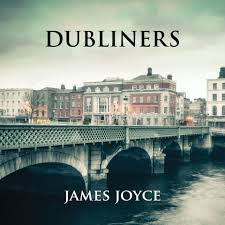
ADDITIONAL QUESTIONS to be addressed in class:
Consider the role of the TITLE in Joyce.
Considred how SETTING is described in Dickens and think about its role in characterization.
Consider the role of OBJECTS in each text.
Could any of the characters in either of the texts be described as a confidant? Why? What is their function in the narrative?
Name two examples of minor characters who function as ‘foils’ in either of the texts. Explain.
Would you describe any of the minor characters in either of the texts as ‘flat’? Why
Would you consider any of the major characters in either of the texts as static or and monodimensional? Why?
-
ASSIGNMENT for WEEK 5 – CHARACTERISATION II
· Read ‘Real Estate’ by Rivka Galchen and ‘Surrogate’ by Tessa Hadley
· Make notes on the questions below
· Read the section entitled ‘Identity’ in the chapter on ‘Character’ by Uri Margolin (pp. 72-75; The Cambridge Companion to Narrative). If you have the time, I recommend that you read the entire essay.
Read the two new short stories and pay attention to the following points, making notes as you read. In many cases, the same or similar questions were asked about the texts assigned for week 4. We will also go back to Dickens's Great Expectations and discuss how representation of space coincides with characterization and talk about foils, confidants etc.
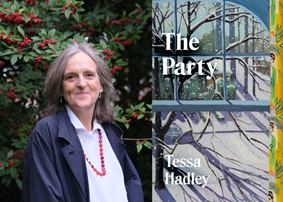

1. Find examples of implicit and explicit characterisation in both Galchen and Hadley. Does one of the two methods prevail in any of the two short stories?
2. Does block characterisation play an important role in either of the two texts?
3. Identify any distinguishable individuals that you can find in both texts (see Margolin on ‘identity’ and ‘qualitatively different individuals’ on pp. 72-74).
4. Make a list of major and minor characters for each of the texts.
5. If there are examples of self-characterisation, can the character be considered a reliable source of information about themselves?
6. What kind of narrator do we encounter in each of the texts? Would you consider them a reliable narrator? Why?
7. Does space play an important role in characterisation in either of the text?
8. Can any of the characters in either of the texts be described as a confidants or ‘foils’? Explain their function in the narrative.
9. How would you describe the characters you have identified in question 3? Are there any ‘types’ / round / flat characters among them? How about the protagonists? Would you describe them as static/dynamic/mono-/multi-dimensional?
10. Are there any examples of ‘dramatic characterisation’ to be found in either of the short stories?
"What is an Unreliable Narrator?": A Literary Guide for English Students and Teachers (Oregon State University; School of Writing)
-
TIME SPACE & MEANING
Study the handout for this week and Teresa Bridgeman’s chapter ‘Time and Space’ from the Cambridge Companion to Narrative. (The chapter offers a very useful introduction into the problematic; read pages 52-6 and 63-4).
Read
An extract from Kate Atkinson’s Life After Life (up to page 82; it’s a quick read)
and
Chapter 1 from A Passage to India by E. M. Forster
and answer the questions below.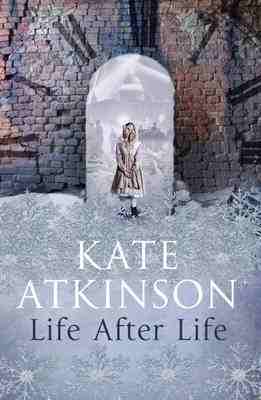



Questions on Life after Life by Atkinson
Make notes on your reading of the extract, considering the following points (ideally, come up with a brief account of 150 to 250 words to gain practice for the essay and the test):
- Think about how the order of events and duration of scenes on the discourse level of the narrative correspond with the story line.
- Consider if the frequency and repetition of events in the narrative plays a role in the temporal dimension of the narrative.
- Apply as many of the following terms as you can:
story time, discourse time, repetition, iteration, narrative past, narrative present, gnomic present, ellipsis, narrator, prolepsis, point of attack (you'll find these defined in the handout and/or the chapter by Bridgeman)
Questions on A Passage to India by Forster
- Think about how the description of space and the idea of perspective affect the way we read the text. Consider how the setting and its presentation lays out the general power relations in the novel.
- Make notes on the following questions:
- How can the setting description be considered to be part of (group) characterisation (look up a summary of the novel’s plot if you aren’t familiar with the latter)?
- How is the atmosphere described and how is it significant for the scene setting?
- Can any aspects of the setting be considered symbolic?
-
Study the handout for this week carefully.
Read
A.] the extract from Barbara Kingsolver’s The Poisonwood Bible
B.] the poem by Sinéad Morrissey.Address the following questions, using the terminology explained in the handout
ad A.] Describe the narrative situation in Kingsolver’s extract.
- What kind of narrators do we encounter here? What is their point of view?
- Focus on how focalisation is used to narrate the story. How does it shift throughout the narrative – between the chapters, but pay special attention to the opening chapter, narrated by Orleanna Price. How does the use of language enhance focalisation in the extract?
- Think about what kind of political intent could be read into Kingsolver’s narrative.
ad B.] Read the poem and consider its narrative situation. Who is the narrator here? Who is the addressee? Is focalisation important? What is the poem about?


-
PLEASE NOTE that there will be NO CLASS on 15/16 April. Use the time to pick the story and topic for your mid-term essay and start researching (looking for secondary sources). Please reread the updated task description at the top of the Moodle course site.

-
Read the following texts and answer the questions below, using some of the terminology introduced in Jahn’s chapter.
Manfred Jahn, ‘Focalization’ in David Herman, The Cambridge Companion to Narrative (pp. 94–9).
and
Jane Austen, Pride and Prejudice (Chapter 1)
and Virginia Woolf, To the Lighthouse (Chapter 1)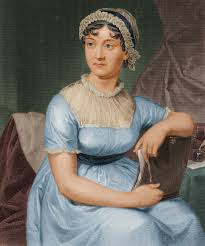



1. Compare the type of narrator we encounter in the two novels (chapters). One is a classic example of 19th-century prose narrative, the other of modernist narrative. How does the narrative situation differ between the two chapters?
2. In which of the two extracts does it make more sense to distinguish between the narrator and ‘reflectors’ (or ‘focal characters’)? Who would these ‘reflectors’ be?
3. What do we learn about the characters and the respective storyworlds from these opening chapters? How do they differ in terms of the prevalent narrative situation and their use of focalisation.
-------------------------------------------------------------------------------
For the class:
Q: Is that really so? Him 'a more nuanced character' and her ‘his less intelligent wife’?
-
Read the following texts and answer the questions below, using the terminology introduced in the handout for this week and relevant terms and concepts from the previous weeks.
A. Charlotte Perkins Gilman (Stetson), ‘The Yellow Wallpaper’
B. Ralph Ellison, Invisible Man (‘Prologue’)2. What methods of representation of consciousness can you identify in each of the texts?
1. How does representation of emotional states and cognitive processes contribute to the realism of the read passages; what kind of illusions does it create?
3. Comment on the use of language in each text (including any changes in tone and register - be prepared to comment on the moments when this occurs and how). Pay attention to the elements of control and impulsiveness (in terms of expression); how are they applied and how do they relate to the characters’ situation and state of mind in that particular moment or in general? What does language tell us about the narrators and their predicament?



-
Week 11 SS - Approaches to Text - TUESDAY 6 May & WEDNESDAY 14 May (classes cancelled on 7 May and 13 May )
N.B.: Week "11" means 6 May for the Tuesday group and 14 May for the Wednesday group.
For the last week of the semseter, you are asked to revisit the short story by Ch. Perkins Gilman and read it through the prism of two critical texts.
We will discuss various theoretical and critical approaches to literature and illustrate some of these by referring to two different interpretations of Ch. Perkins Gilman’s “The Yellow Wallpaper”.
Write a short response based on the questions for this week and the essay assigned to your team (you'll be notified about the teams by email), but read BOTH essays, so that we can have a meaningful discussion.
TEAM A. Carol Margaret Davidson, “Haunted House/Haunted Heroine: Female Gothic Closets in ‘The Yellow Wallpaper’”
TEAM B. Paula A. Treichler, “Escaping the Sentence: Diagnosis and Discourse in ‘The Yellow Wallpaper’”
- What critical approaches to literature does the essay exemplify (refer to the lecture transcripts and/or the handout provided for this session)?
- Explain if you did or did not find the essay elucidating. Did it alter your reading of Gilman’s short story or some of its aspects?
- Name two to three most important/interesting aspects of the essay's thesis on which you agree with the author and explain why.
- Find two to three points on which you disagree with the author (if you cannot find any, pretend to disagree) and explain why.
-
-
Essays must be typed in WORD format (or an equivalent; NO PDFs) and uploaded here. Contact me by e-mail (prior to the deadline) if you encounter difficulties uploading your paper.
The DEADLINE for the submission of essays is 11 May 2025 (11:59 p.m.).
Extensions will only be granted on the basis of a consultation or written request accompanied by a doctor’s certificate. Students are advised that they may, at the lecturer’s discretion, be given the option of re-submission where essays have failed to achieve a satisfactory standard of argumentation. However, any rewrites must be submitted (by email to daniela.theinova@ff.cuni.cz) by 7 September 2025.
Plagiarism will not be tolerated and will result in a fail grade. The use of generative AI for this assignment is prohibited.

-
-
WHAT IS POETRY?
FOUR BASIC TROPES: METAPHOR, SIMILE, METONYMY, SYNECDOCHE
Ted Cohen: "Metaphor is the achievement of intimacy [between writer/text and reader]."
Assignment for WEEK 2
For discussion:
- Think (and prepare written notes) about how you would define POETRY. What are its derining qualities? What distinguishes it from other genres? Are there differences between how poetry is written and read today and how it was composed and experienced in the past? Note down 2 things that you think poetry is not or does not do.
- Read the two poems on Moodle (Shakespeare and Shelley) and make yourselves familiar with their language and contents. Print the poems out or download them to be able to make notes prior to and in the class.
Writing:
- Consult three reputable sources and compose definitions of the terms METAPHOR, METONYMY, SYNECDOCHE and SIMILE, using footnotes to reference your sources. Include a bibliography at the end. The individual definitions should be concise but written in academic prose using complete sentences (not bullet points etc.).
o Are there any significant differences between the definitions of the individual terms you have found?
o Your sources should be print, NOT websites or standard (language) dictionaries (dictionaries of literary terms are fine).
o Try to use your own words as much as you can but include at least three paraphrases and three citations with the sources referenced in the footnotes. Remember that all quotations and paraphrases must be identified in the text”
- use quotation marks for direct quotations
- embed (introduce) your quotations AND paraphrases by relevant introductory tags (as XY argues; writes XY; to use XY’s terms etc.)
- include properly formatted references to your sources in the FOOTNOTES (and in the BIBLIOGRAPHY section at the end)
o All sources on which your definitions draw must be listed (in the footnotes and bibliography sections). Consult the “UALK Chicago Guidelines” to properly format your footnotes and bibliography.
o One short paragraph per term should suffice (approx. 50 to 120 words). Try to be concise and concentrate on the formal aspects of your writing as well as the contents.
o Use the ‘References/Footnotes’ tab to insert your footnotes in your text.
Do not submit your definitions beforehand. We will discuss them IN CLASS.
Some links (optional):
Ted Cohen - Metaphor and Ambiguity: Two for the Price of One (a lecture).
-
Please note that the homework/assignment for this week (Week 2) will not be collected until later. Prepare your definitions and try to locate the sources but there is no need to submit them at this point.
-
Some sources on poetry, mentioned in the discussions this week:
- Derek Attridge, The Craft of Poetry: Dialogues on Minimal Interpretation (with Henry Staten)
- John Ciardi, How Does a Poem Mean?
- Jonathan Culler, Theory of the Lyric
- Vona Groarke, Four Sides Full
- Ben Lerner, The Hatred of Poetry
- James Longenbach, The Lyric Now
- Glyn Maxwell, On Poetry & Drinks with Dead Poets: The Autumn Terms
-
The New Yorker Fiction Podcast: Teju Cole Reads Anne Carson (with December 1, 2023
-
In Poetry: A Very Short Introduction, Bernard O’Donoghue, notes that most theories of poetry (and art as such) in the Western tradition have evolved around the basic distinction between ‘the idea of poetry [...] as either imitative, or transcendent: either imitating lie or reality of nature, or surpassing those things in a way that somehow compensates for their deficiencies’.[1] Other ongoing arguments include the question about which is more important: the sense or the sound of poetry – its semantic or its sonic/material qualities. This is related to the idea that poetry either leads us to deeper knowledge of the world (or self-knowledge), or that it is concerned with providing aesthetic pleasure. Yet another distinction is found in the contrast between Shelley’s famous claim that ‘poets are the unacknowledged legislators of the world’,[2] and W. H. Auden’s counterclaim that ‘poetry makes nothing happen’.[3] The latter idea is supported by James Longenbach’s argument that ‘the marginality of poetry is in many ways the source of its power, a power contingent on poetry’s capacity to resist itself more strenuously than it is resisted by the culture at large’.[4] Many conceptions of poetry and its role (answers to the questions of ‘What poetry is’ and ‘What it is for’), as you can see below, focus on its universality (despite its marginal status in most modern cultures), or on the importance of language and sound for the way poetry communicates its meaning.
FEEL FREE TO KEEP ADDING TO THIS BANK OF IDEAS ON POETRY – its possibilities as well as limitations!
[Poetry is] the first light-giver to ignorance. — Philip Sidney
Poetry is a sword of lightning, ever unsheathed, which consumes the scabbard that would contain it. —Percy Bysshe Shelley
If I read a book and it makes my whole body so cold no fire can ever warm me, I know that is poetry. – Emily Dickinson
Poets fear wisdom. — James Longenbach
Poetry is my deepest health. — Sylvia Plath
Poems are moments’ monuments. — Sylvia Plath
A poem is never finished, only abandoned. — Paul Valéry
Poetry is just the evidence of life. If your life is burning well, poetry is just the ash. — Leonard Cohen.
Poetry is when an emotion has found its thought, and the thought has found words. — Robert Frost
[Lyric as a form] stands or falls on the accuracy of language with which it reports the author’s emotional responses to the life around him. — Helen Vendler
Genuine poetry can communicate before it is understood. — T. S. Eliot
I would define, in brief, the poetry of words, as the rhythmical creation of beauty. — Edgar Allan Poe
Poetry is a composition of words set to music. Most other definitions of it are indefensible or metaphysical. — E. A. Poe
The poem: a prolonged hesitation between sound and sense. — Paul Valéry
Poet is the One Who, on Behalf of Others and for their Benefit, Maintains a Friendship with Language. — Petr Borkovec
Poetry is words. — A. C. Bradley
Poetry is language at its most distilled and most powerful. — Rita Dove
A poet is, before anything else, a person who is passionately in love with language. — W. H. Auden
Poetry is the form of supreme locution in any culture. — Joseph Brodsky
[P]oetry is the universal possession of mankind, revealing itself everywhere and at all times in hundreds and hundreds of men. [...] National literature is now an unmeaning terms; the epoch of world literature is at hand. — J. W. Goethe
[1] Bernard O’Donoghue, Poetry: A Very Short Introduction (Oxford and New York: Oxford University Press, 2019), 3.
[2] Percy Bysshe Shelley. A Defence of Poetry and Other Essays, 1821, Project Gutenberg (April 2004) accessed October 10 2024, https://www.gutenberg.org/ebooks/9097.
[3] W. H. Auden, ‘In Memory of W. B. Yeats’, in The English Auden: Poems, Essays, and Dramatic Writings 1927–1939, ed. Edward Mendelson (London: Faber, 1977), 242. Auden’s phrase is one of the most disputed statements about poetry in twentieth-century criticism. For a concise summary of the debate, see John Lyon, ‘Disappearing Poetry: Auden, Yeats, Empson’, in The Oxford Hanbook of British and Irish War Poetry, ed. Tim Kendall (Oxford: Oxford University Press, 2007), 279–85.
[4] James Longenbach, The Resistance to Poetry (London and Chicago: University of Chicago Press, 2004), 1.
- Think (and prepare written notes) about how you would define POETRY. What are its derining qualities? What distinguishes it from other genres? Are there differences between how poetry is written and read today and how it was composed and experienced in the past? Note down 2 things that you think poetry is not or does not do.
-
Though the classes this week have been cancelled, you are asked to submit by Wednesday night (via Moodle):
1. your Assignment for Week 2 (the definitions of tropes)
2. Also, I am asking you to go back to Shakespeare's Sonnet 60 and Shelley's "Ozymandias" and identify in each of them (if possible):
1 simile
3 metaphors
2 metonyms
2 synecdochesMake sure you explain your choices, using terminologies and key words you've included in your definitions; see also the Handout for Week 2 and your lecture notes. It should be clear from your explanation why the particular phrase or word works as the trope of your choice in the context of the poem or its relevant part/image.
You can include your answers as scans of the poems with your handwritten notes, or type your answers on both poems in the file containing your definitions.
You'll get feedback on the definitions by email and we'll discuss your analyses of the poems in Week 4 of the semester.
-
We will meet this week, despite it being the Dean's Sports Day on 22 October.
Assignment for WEEK 4:
IRONY
Term definition:
- With reference to at least two scholarly sources, define irony, focussing on the following questions:
Q: What work does irony do, what effects does it create?
Q: What are some of the types of irony and why is it useful to distinguish between them?
N.B.: This is NOT part of the homework for Week 2/3 (definitions of tropes). Definitions of irony will be reviewed in class; make notes but you are not asked to send them beforehand.
Reading & Questions for Discussion:
- Read Shakespeare’s Sonnet 130 and Swift’s 'A Modest Proposal'. Both use irony as a key device.
Q: Identify specific forms of irony used by both authors.
Q: Evaluate the use of irony in each – what impact does it have on you as a reader? How does irony work to develop the central theme of each text??
Q: Imagine what would be lost or gained if irony were not a feature in either of the text.
- BRING Shelley’s “Ozymandias” and Shakespeare’s Sonnet 60 to the class – we will discuss your identification of the 4 tropes in the two poems (See assignment for Week 3).
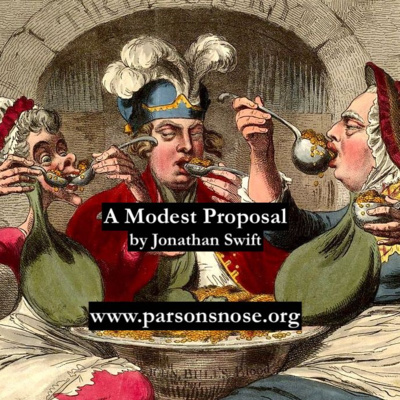
https://podcasters.spotify.com/pod/show/pntradio/episodes/A-Modest-Proposal-e1fqh5p
- With reference to at least two scholarly sources, define irony, focussing on the following questions:
-
SOUND PATTERNING I: METRE AND RHYTHM
READING & DISCUSSION QUESTIONS:
- We will start by discussing Shelley's Ozymandias, Shakespeare's Sonnet 130 and Swift's 'A Modest Proposal' and comment on their use of irony.
STUDY the handout on irony (under Week 4) and MAKE NOTES about how these three works rely on different types of irony in communicating their message. What is that message in each? - Find out what metre and rhythm are in terms of poetry writing and appreciation. Why are metre and rhythm important in poetry; how has their application and significance changed over the past centuries and why?
- Read the poem by William Blake assigned for this week and determine how metre and rhythm help to shape the meaning (we’ll go back to the other poems in the file in one of the following weeks).
PRINT OUT the poems for this week unless you can handwrite in your appliance.

- We will start by discussing Shelley's Ozymandias, Shakespeare's Sonnet 130 and Swift's 'A Modest Proposal' and comment on their use of irony.
-
SOUND PATTERNING II: METRE AND RHYTHM
DISCUSSION QUESTIONS:
- Go back to Swift's 'A Modest Proposal' and find instances of the following types of irony (be prepared to defend your choices): antiphrasis, sarcasm, parapipsis, litotes, situational irony
- Study the handout for Week 5 on Sound Patterning (Metre and Rhythm)
- Read the poems by William Blake and Wilfred Owen under Week 5 you and prepare their scansion (mark the stressed and unstresssed syllables and divide the lines into poetic feet). Try to decide on the prevalent metre. We will comment on how these texts use metre (including irregular features) to emphasise certain concepts, contrasts and immages.
- Read the poems by Emily Dickinson and John Donne (also under Week 5) and be prepared to talk about their themes and structure: What form do they use? What kind of stanza? You do are not asked to perform the scansion on these two poems.
PRINT OUT THE POEMS for this week – unless you can handwrite in your appliance.
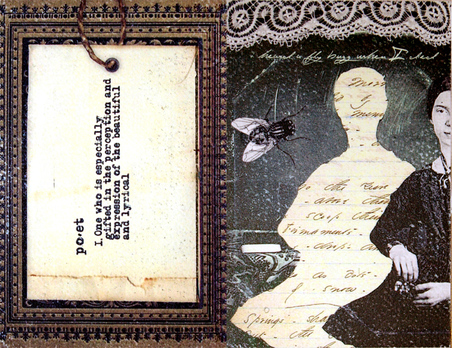
-
SOUND PATTERNING III
METRE, RHYTHM, RHYME
READING AND DISCUSSION QUESTIONS:
1. Go back to Wilfred Owen’s ‘Anthem for the Doomed Youth’, Emily Dickinson’s ‘I heard a fly buzz’ and John Donne’s ‘Sonnet No 10’ from the previous assignment and prepare their metrical analysis (most of you will have done so already). Mark the poems through using scansion and try to identify the prevalent kind of metre in each poem. First, ignore irregularities and find the most regular lines. Then try to account for the irregularities. Consult the handout and the document with "Additional terms useful for metrical analysis" under Week 5.
Some questions on the poems:
Owen: What’s the form here? How do metre and rhythm relate to the concepts and images presented (concentrate on the development between the poem’s two parts)? How do you interpret the ‘drawing down of blinds’ in the last line of the poem? What kind of trope is it? Wha is its significance?
Donne: What are our metrical expectations in the case of a sonnet? How are they fulfilled/undermined here? Find the most regular line(s) in terms of metre. Locate the volta and consider it from the viewpoint of metre.
Dickinson: Describe the theme of the poem. How do you interpret the lyric’s central image (the fly)? What’s remarkable about Dickinson’s use of rhythm?
2. Read the poems for this week (Keats and Hopkins) and compare the ways in which they employ rhyme and sound repetition. You don’t need to perform metrical analysis for these two poems. Instead, look for any rhyming patterns you can discern and think about how rhyme or its absence/ modifications/ distortions help to communicate meaning. (Consult the handout for this week.)
PRINT OUT THE POEMS for this week (unless you can handwrite in your appliance).

-
PICK YOUR POEM, DECIDE ON YOUR ESSAY TOPIC AND START RESEARCHING
The poems and topics are specified above, under COURSE REQUIREMENTS/MID-TERM ESSAY!
This is a good time you started researching for your mid-term essays. Find 4 to 5 reputable, relevant sources and make notes before you start writing the essay per se. Also, read carefully the files above on how to structure a thesis statement and how to approach a poem analysis. You are welcome to consult with me on your choice of secondary sources, on your thesis statement, or any other questions you might have.
-
SOUND PATTERNING IV
VERSE FORMS
(PLUS METRE, RHYTHM AND RHYME)
READING AND DISCUSSION QUESTIONS:
· Study the handout on Verse Forms (below) and review the one on Rhyme and Sound Repetition (from two weeks ago).
· Read the poems below (those by Bishop and Thomas; we’ll skip Keats’s ‘Upon First Looking at Chapmpan’s Homer’) and prepare their rhyme-scheme analysis (aba etc.). Compare the ways in which they employ elements of sound, especially rhyme and sound repetition (assonance, consonance, alliteration).
· We will also discuss Keats's 'To Autumn' and Hopkins's 'Windhover' from last time, focussing on the same: rhyme & sound repetition.
· Do the new poems (by Bishop and Thomas) have anything in common in terms of their theme or the emotions/mood they convey? What are the poems telling you?
· In Bishop, concentrate on how objects represent emotions and experiences and how these associations change throughout the poem.
ADDITIONAL LINKS AND READING MATERIALS
On villanelle https://poets.org/glossary/villanelle
On Thomas's villanelle (with and audio of the poet reading his poem) https://poets.org/poem/do-not-go-gentle-good-night
On Bishop's 'Sestina' and DNA structure:
Janine Rogers 'Life Forms: Elizabeth Bishop’s “Sestina” and DNA Structure', Unified Fields: Science and Literary Form (Montreal, London, Ithaca: McGill-Queen's University Press, 2014), 66-82.


-
DRAMA I
READING AND DISCUSSION QUESTIONS:
Reread Bishop's 'Sestina' and Thomas's 'Do Not Go Gentle...'. We'll be focussing on how the two poems and their respecitve forms use repetition (verbal, sonic, conceptual).
In Bishop, focus also on other repeating words and concepts apart from the 6 teleutons. What are some of the emotions communicated by the poem. How does scale and setting play into this?
What kind of effect do the repeating lines in Dylan create?
================================
Read G. M. Synge’s Riders to the Sea.
· Think about the play’s form, genre and structure.
· Is the plot of the play linear? Do we find all the elements of a linear plot, i.e. exposition, complication, climax and denouement here? Try to identify as many of these as you can. Where exactly do they occur?
· What are the characters and what are their constellations (relationships and groupings)? Focuss on the opening and the closing part of the play.
· What's the function of supernatural elements - how are they used in the play’s narrative.
· Think about the significance of the setting and stage props to the action.Do any of the latter have symbolic function?
· Find possible moments of dramatic irony in the play.

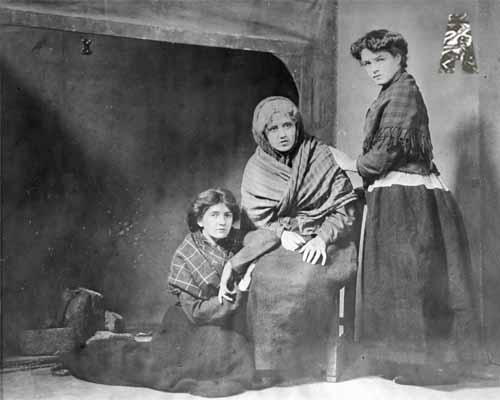


-
DRAMA II
READING AND DISCUSSION QUESTIONS:
A. We'll go back to discussing Synge's Riders to the Sea focussing on the following:
- the supernatural. How do superstitions and supernatural elements influence the play’s narrative and chracter's lives?
- moments of irony.
- stage props and objects mentioned in the play. Identify two objects thay have both a practical and symbolic significance in the islanders' lives and the play's narrative.
B. Read Samuel Beckett’s Krapp’s Last Tape.
- Think about the play’s form, genre and structure.
- Write down five adjectives that characterize Krapp, the title character, for you.
- Write a three- to five-sentence summary of what the play is ‘about’.
- Think about the significance of the setting, stage props and stage directions. (We'll be comparing this to our findings about Syng's playlet.)
- Think about the role of repetition here.
- Find possible moments of dramatic irony in the play.
It is helpful to watch any of the performance videos available online, but DO read the text of the play first!
(This is not a written assignment, bring your answers to the class.)



- the supernatural. How do superstitions and supernatural elements influence the play’s narrative and chracter's lives?
-
MID-TERM ESSAY
See above, under Course Description, for details on the assignment.
See above for the DALC Chicago Guidelines.FINAL CHECK before submiting:
- The minimum length for the essay is 1.500 words, the maximum length is 1.550 words (the word limit includes the MAIN TEXT OF THE ESSAY AND FOOTNOTES; it excludes the BIBLIOGRAPHY).
- Abstracts are NOT required. If you provide an abstract, it should not be included in the word count.
- Use formal register appropriate for academic writing.
- Make sure your essay contains an introductory paragraph with a thesis statement, and that you have included a conclusion.
- Use spell-check and pay attention to formatting matters (use of punctuation, including inverted commas, inclusion of run-in and block quotations etc.).
- Pay attention to the differences between the formatting for sources in footnotes & bibliography (SEE DALC Chicago Guidelines for details).
- Use shortened references in footnotes for repeatedly cited sources.
- Take care to structure and link your paragraphs logically.
- Make sure all your sentences include a subject and a verb.
- Avoid using overlong sentences (of 45 words or more).
- Make sure your sources are relevant and appropriate. Remember that these must include at least one monograph or collection of essays (published in a book form) on a relevant theme.
- Note that the use of generative AI for this assignment is prohibited.
- Essays must be typed in WORD format (or as an .odt file; NO PDFs)
- Essays should be uploaded on Moodle. Contact me by email if you encounter difficulties uploading your paper.

-
GENRE + INTERTEXTUALITY & ALLUSION
READING AND DISCUSSION QUESTIONS:
A.
· Write a short summary (no more than 80 words) of Angela Carter’s ‘The Company of Wolves’.
· How would you classify the piece in terms of genre? Is this question hard to answer in the singular? Look for moments of generic plurality and transformation. Name the genres that you think are being used or implied in those moments.
· One of the things Carter sets out to do here is to produce an adaptation of a "classical" fairy tale. Why? What could have been her motivations?
· Write down four adjectives that define the character of Red Riding Hood for you.
· Write down four adjectives that characterize her male counterpart for you.
B.
· Think about the possible uses of allusions in literature. Think of two examples from your reading experience in which allusions are a marked (structurally important) feature.
· Read 'Yarrow' by Paul Muldoon - at least the first 4,5 pages of the poem - and make notes on the following questions:
- How woud you describe the poem's form? Pay attention to its use of rhyme and sound repetition.
-
Look up some of the allusions. Think about their provenience and character. How does the use of intertextuality influence the overall tone of the long poem?
- Why do you think Muldoon chose yarrow as one of the leitmotifs in this poem? What is the symbolic implication of the plant in the poem?

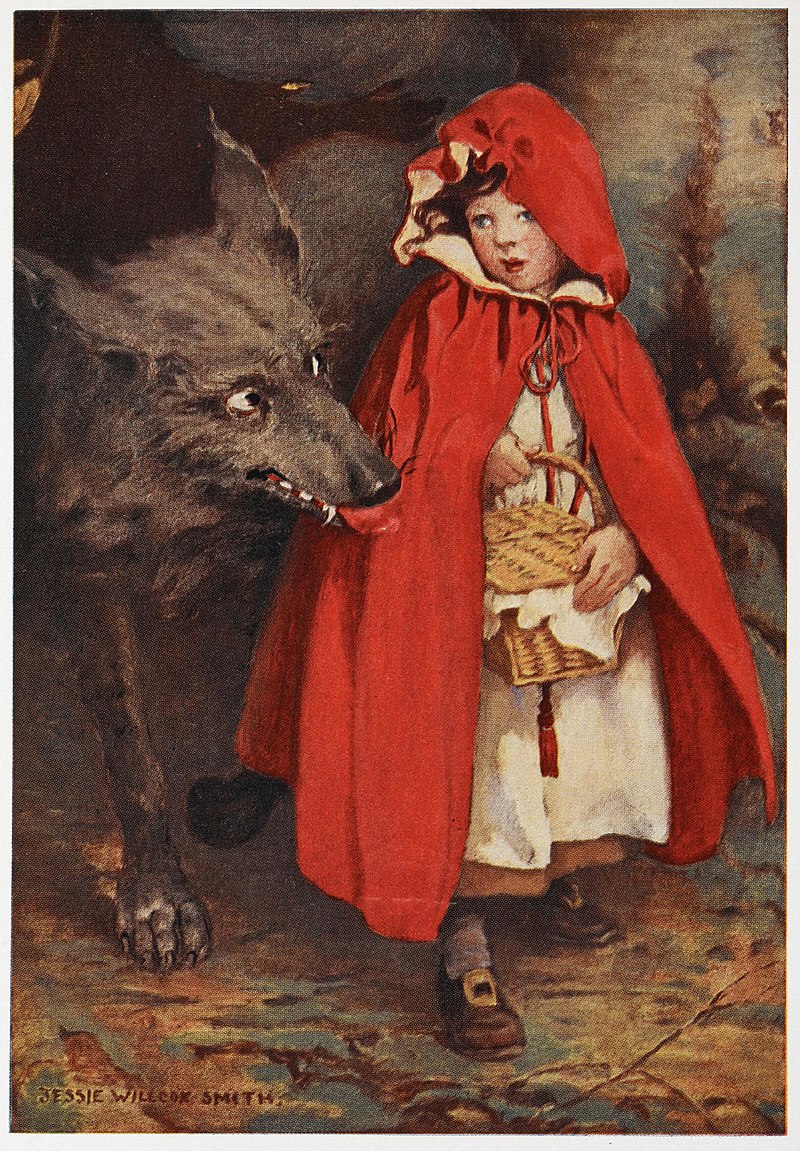

- How woud you describe the poem's form? Pay attention to its use of rhyme and sound repetition.
-

... and a happy New Year!
-
See you in the summer semester!

